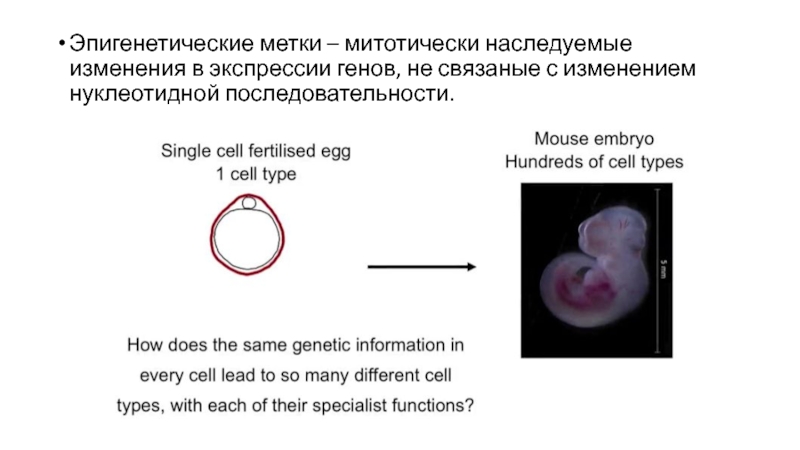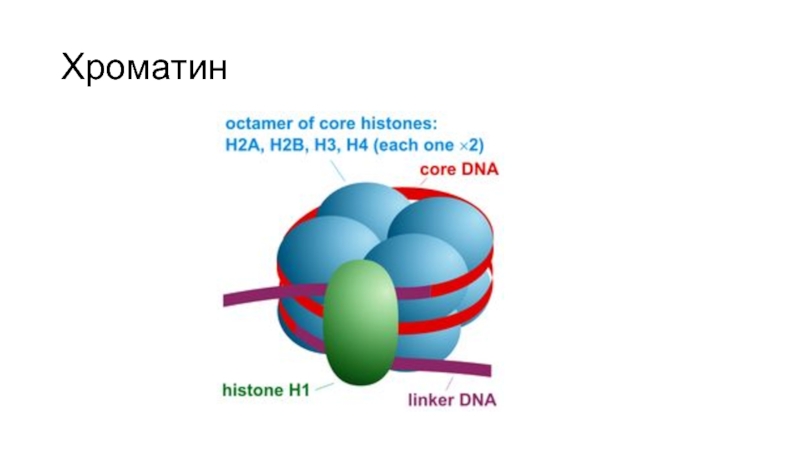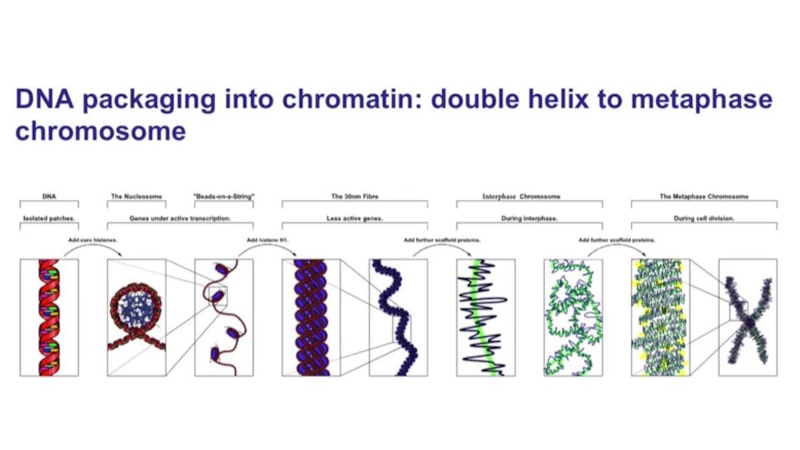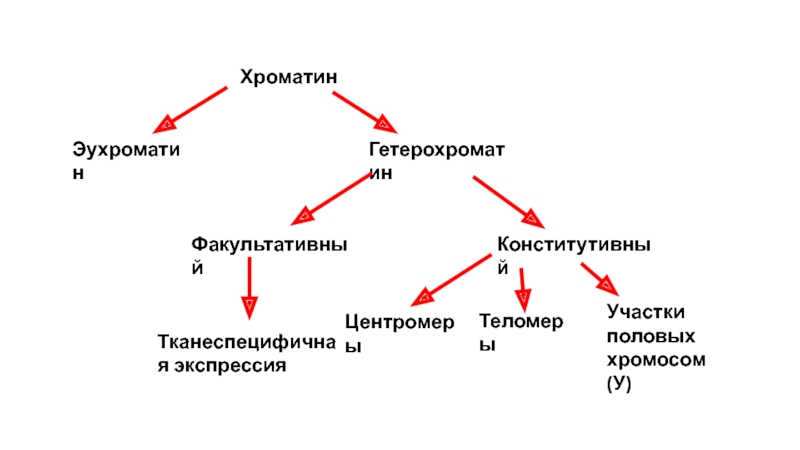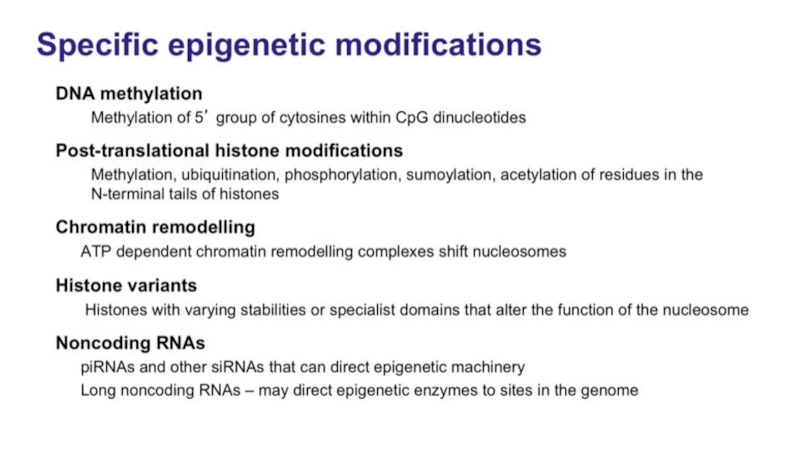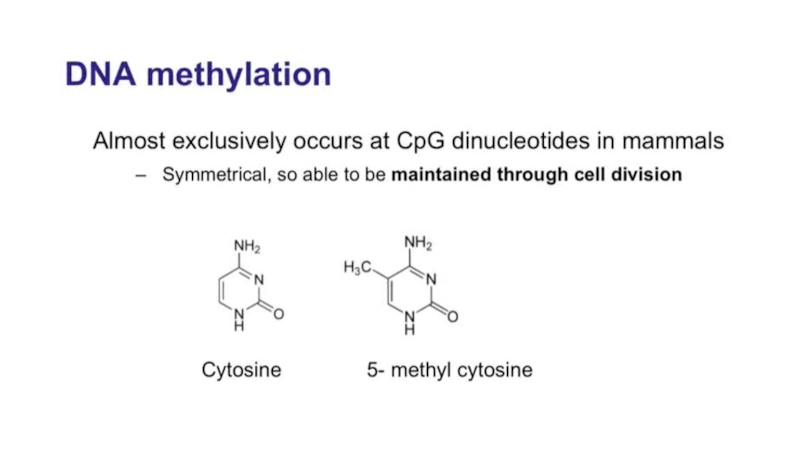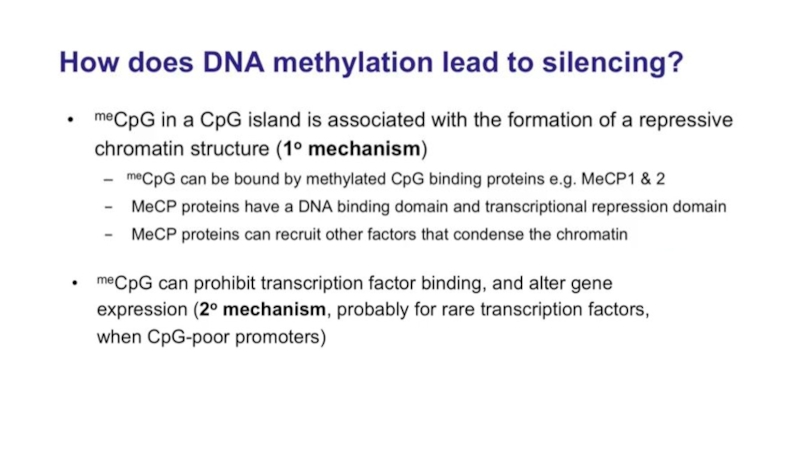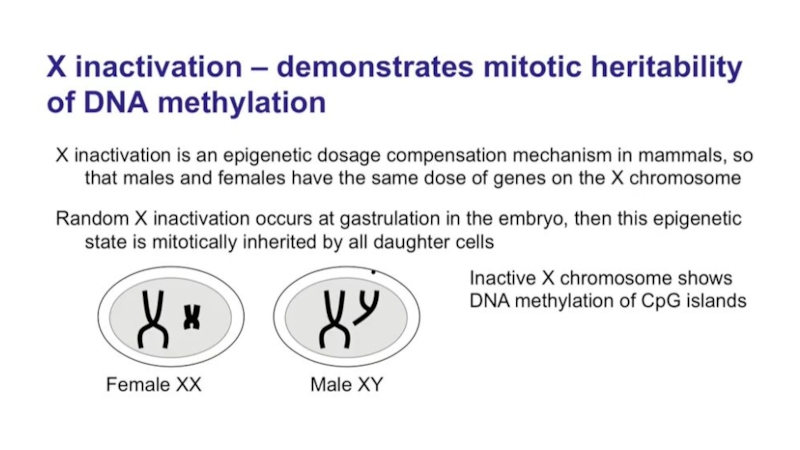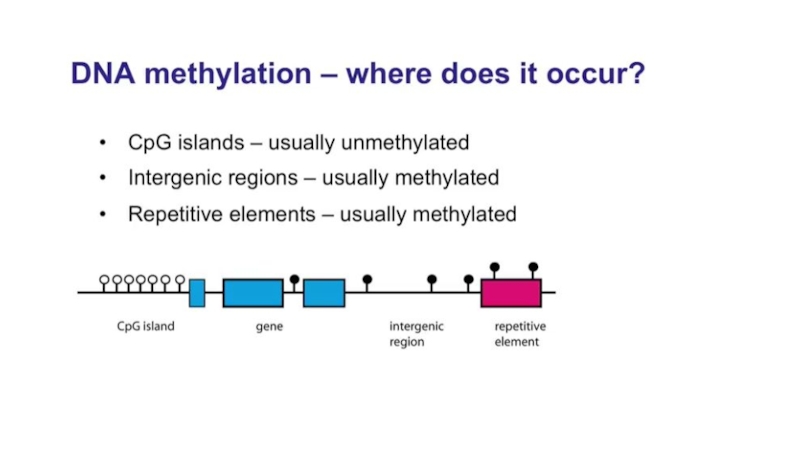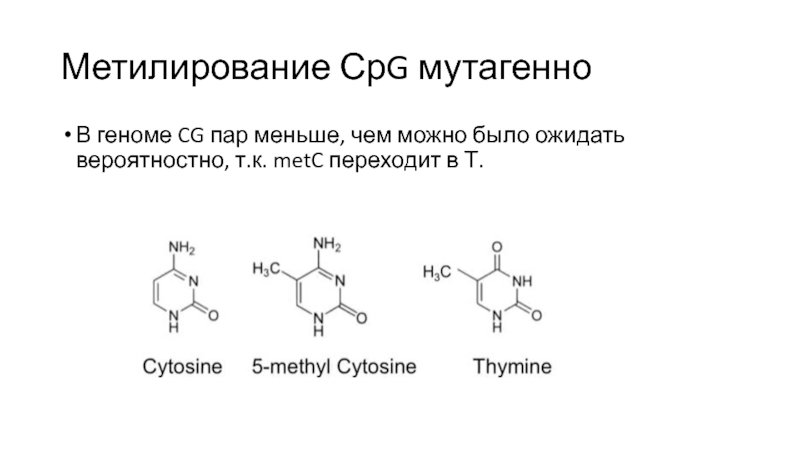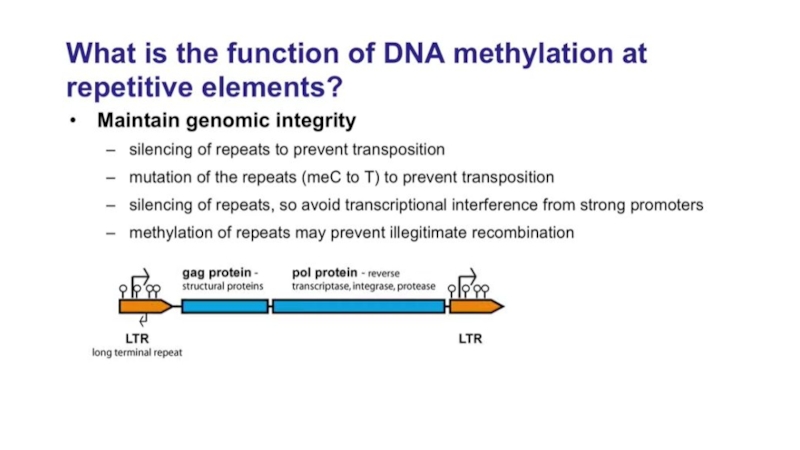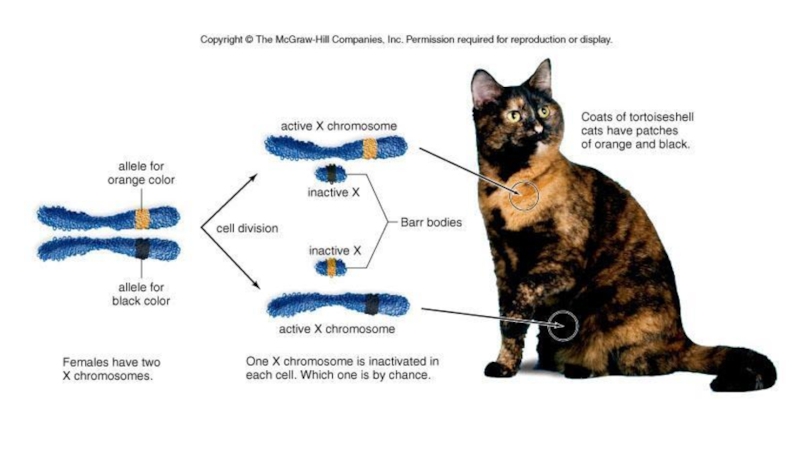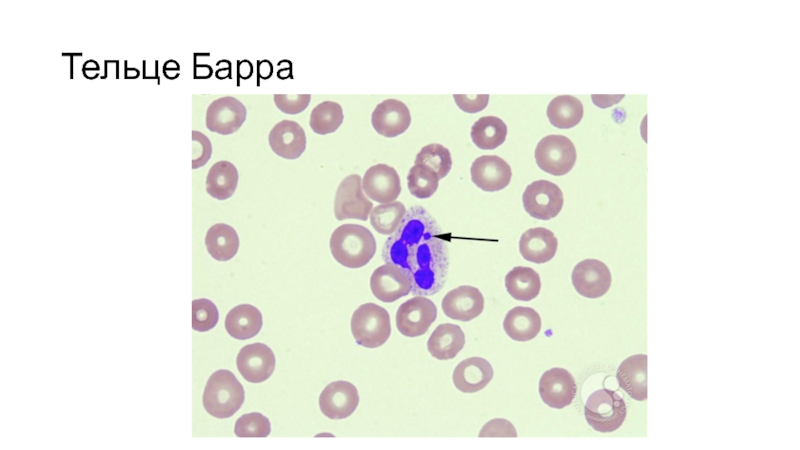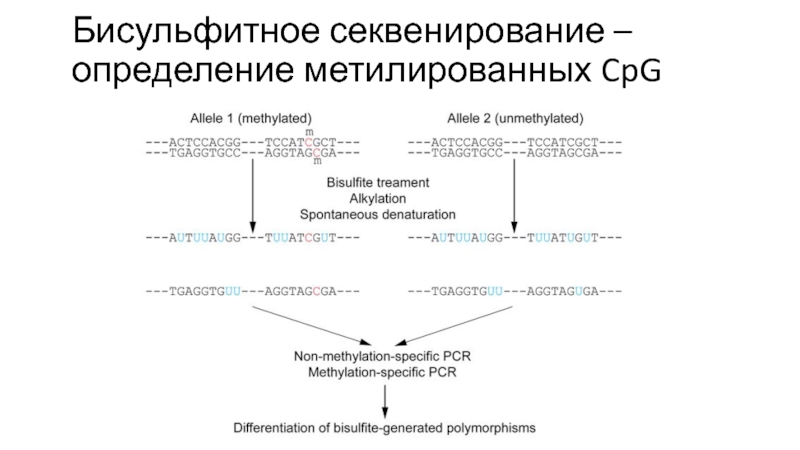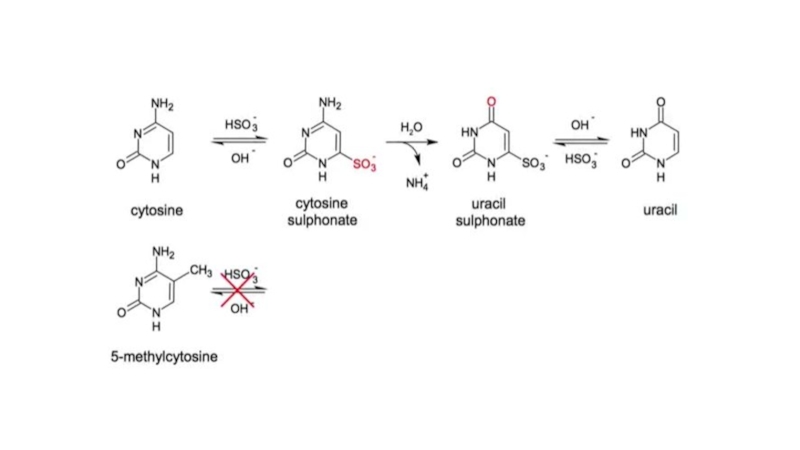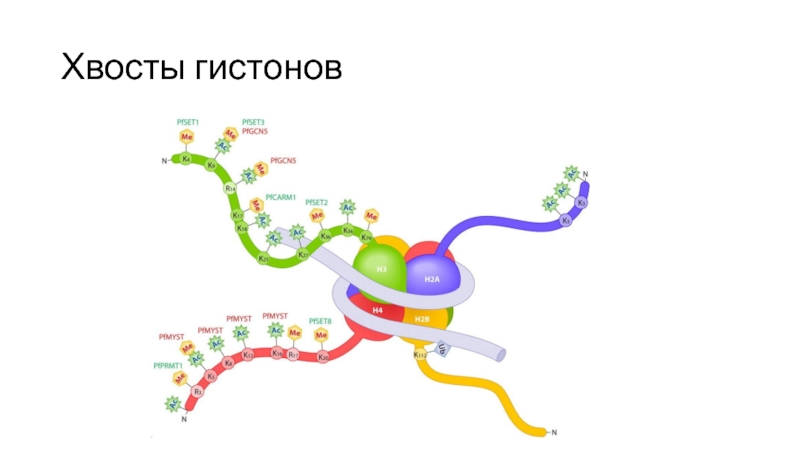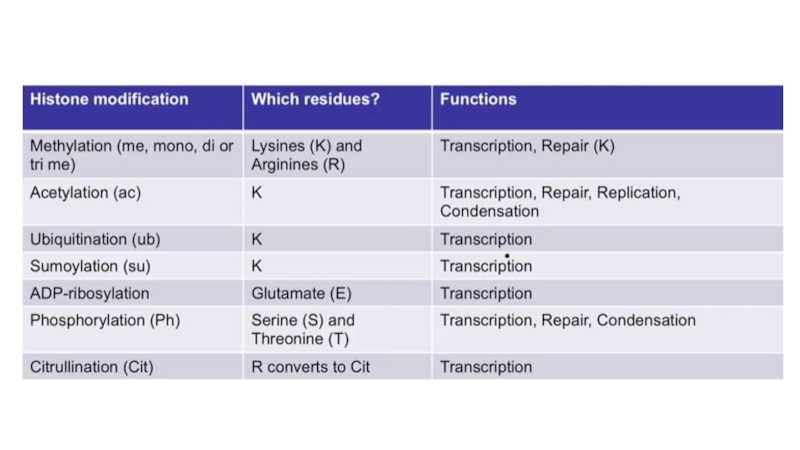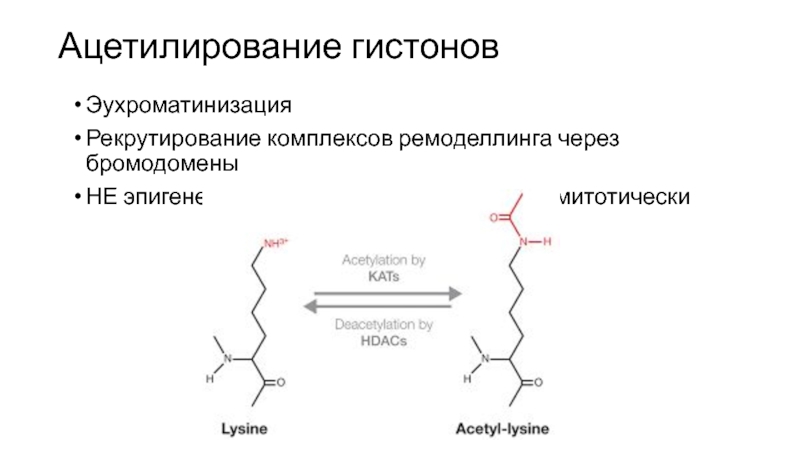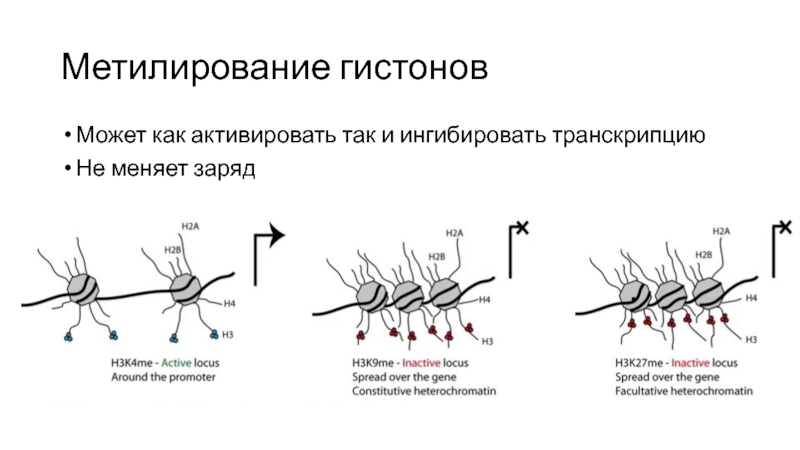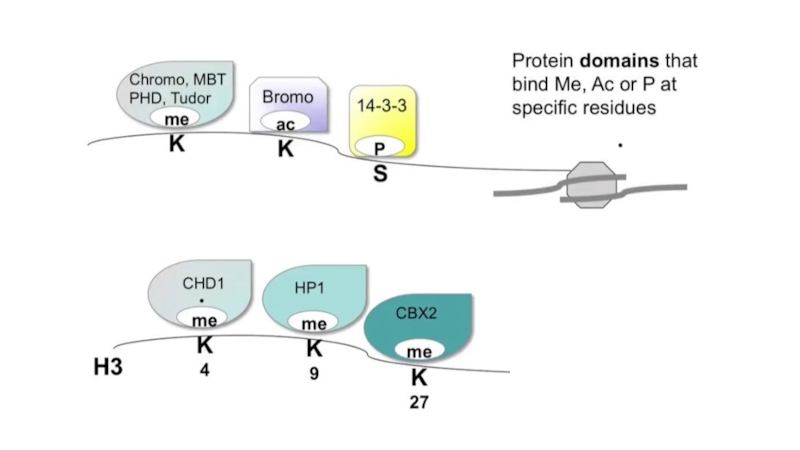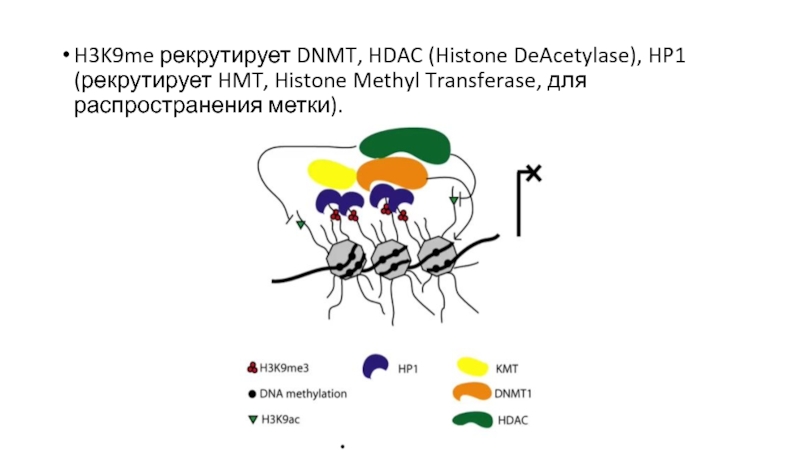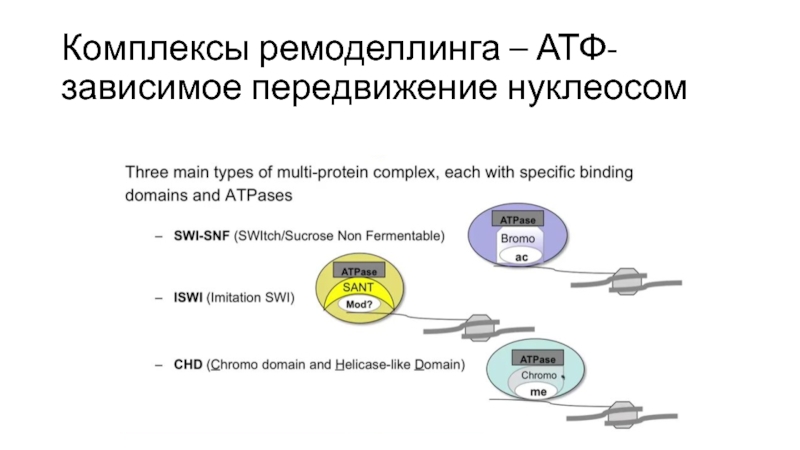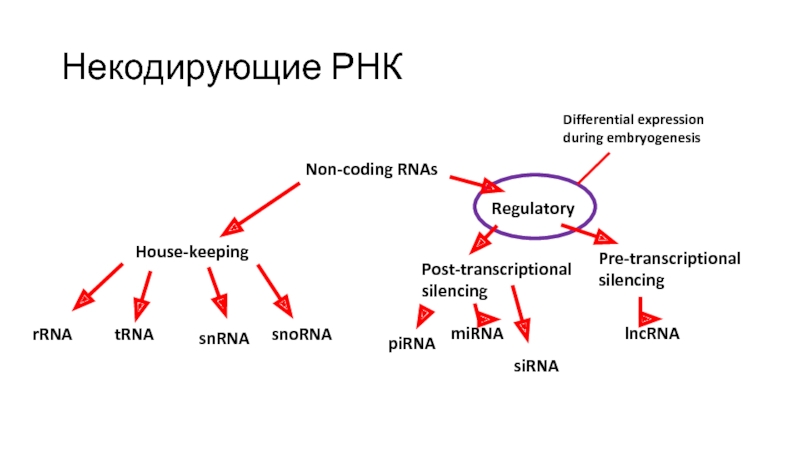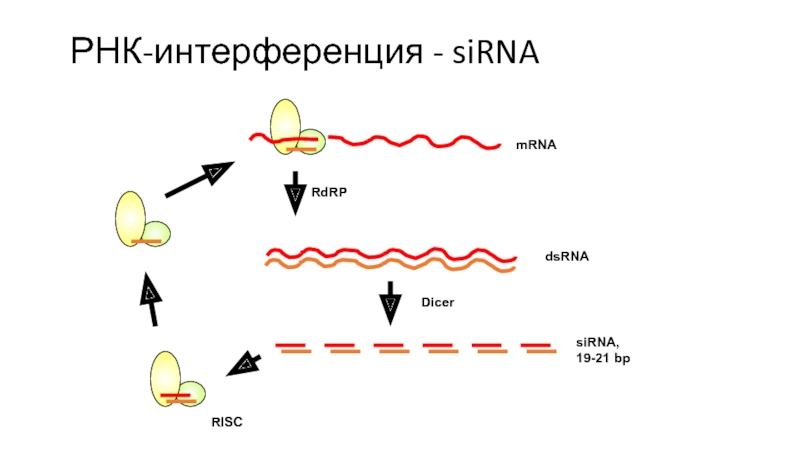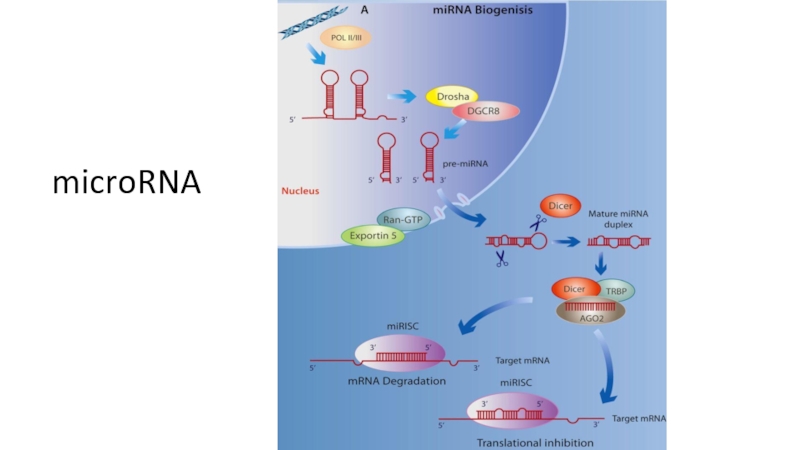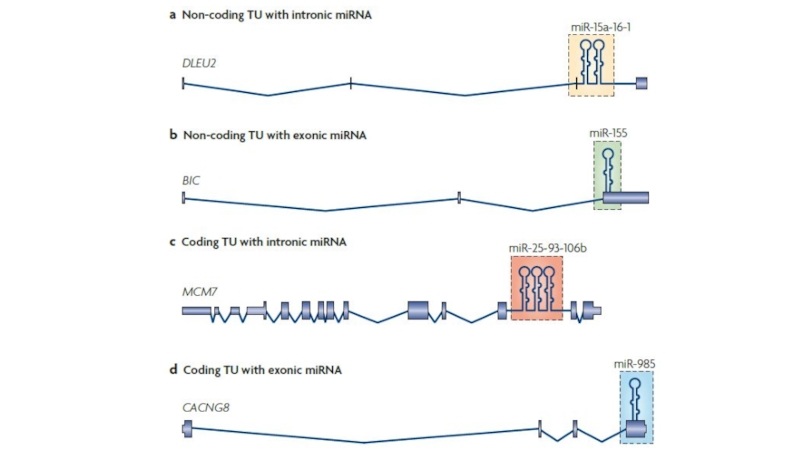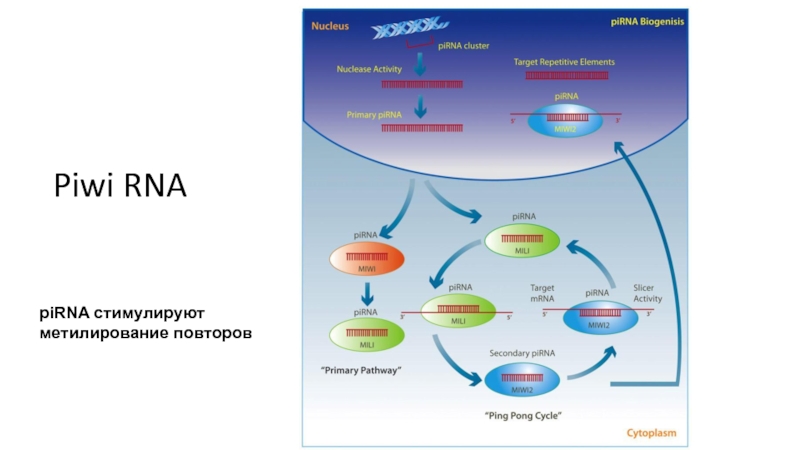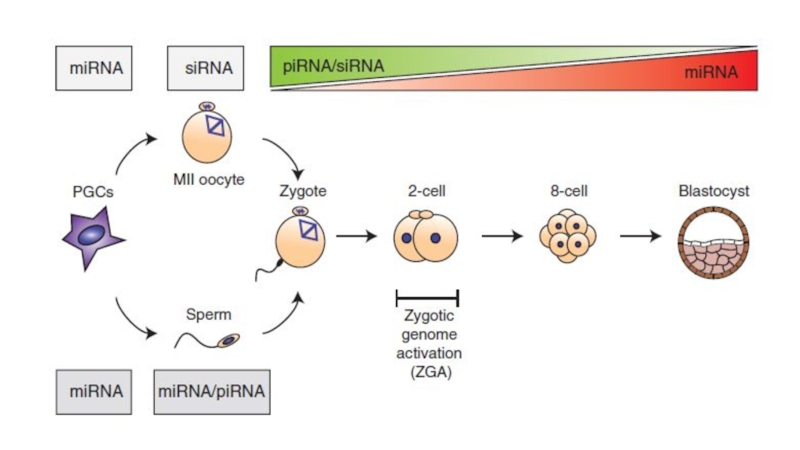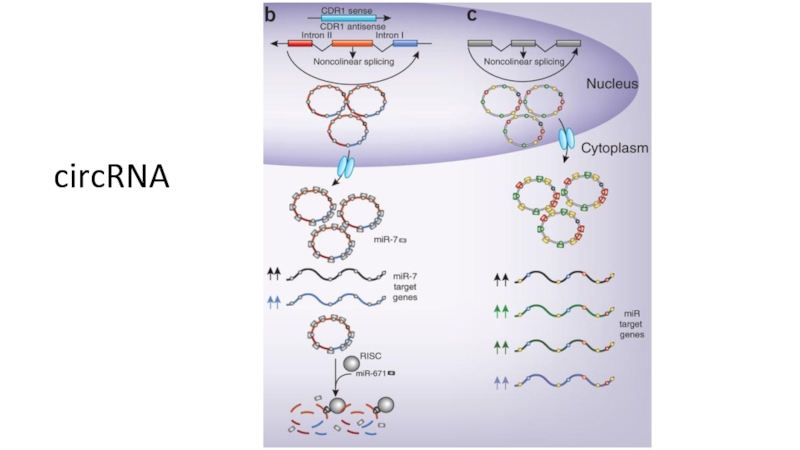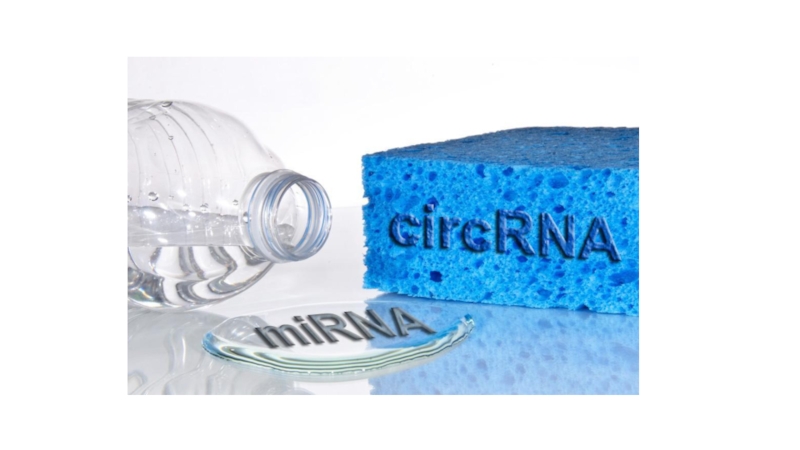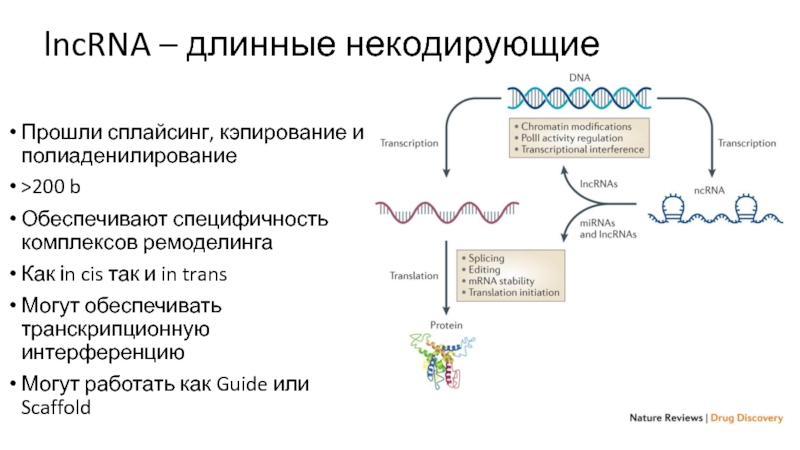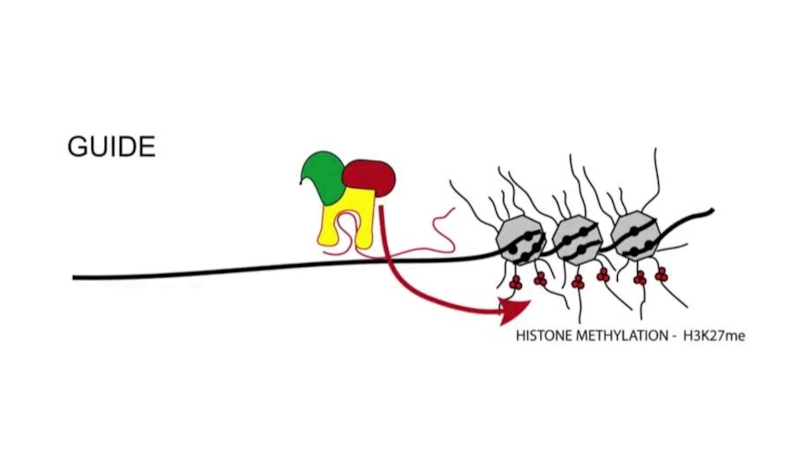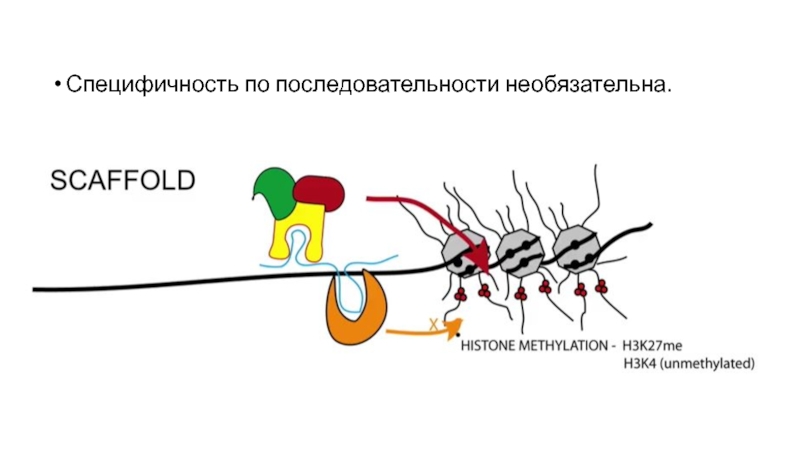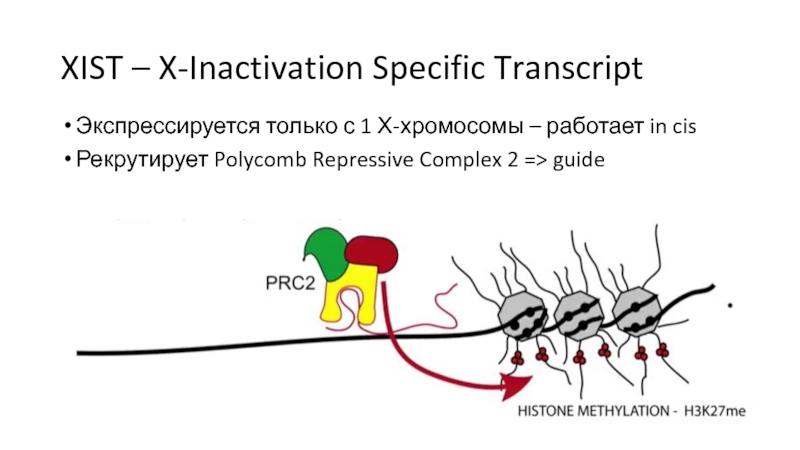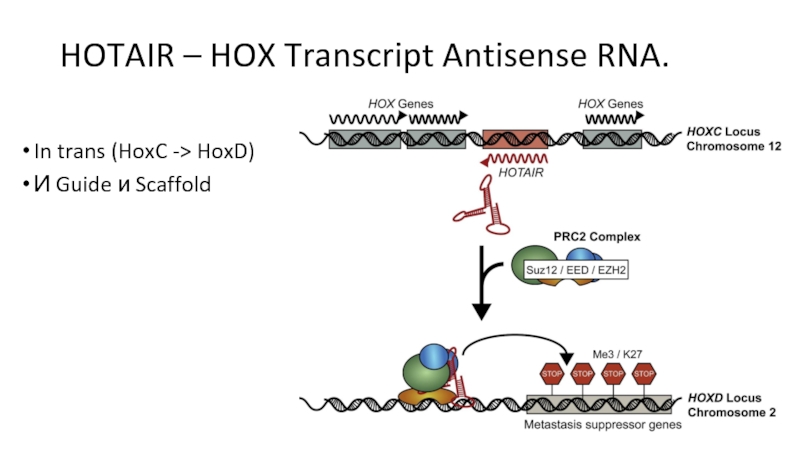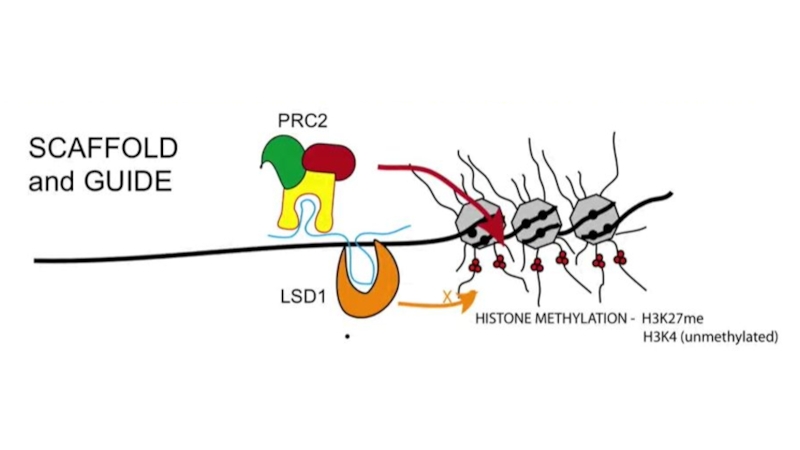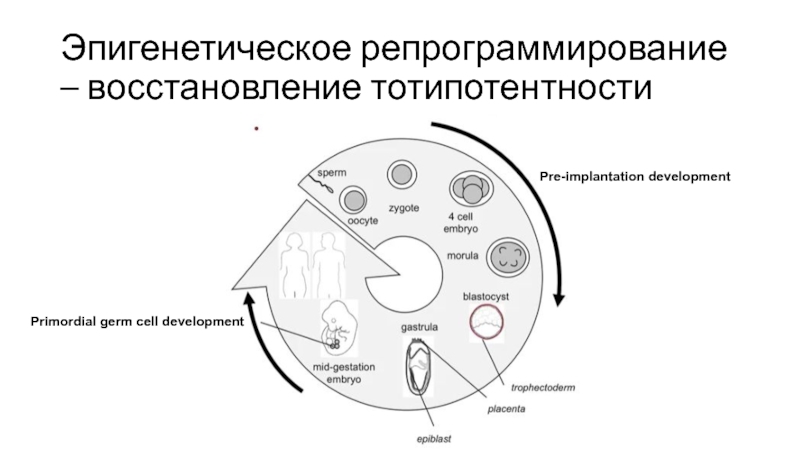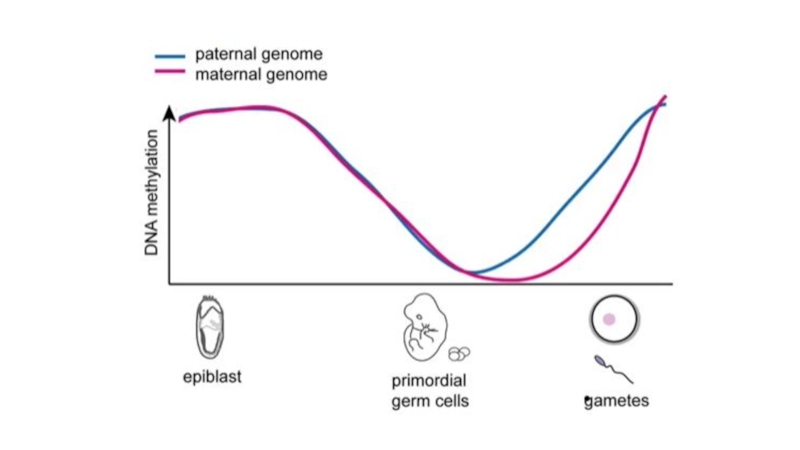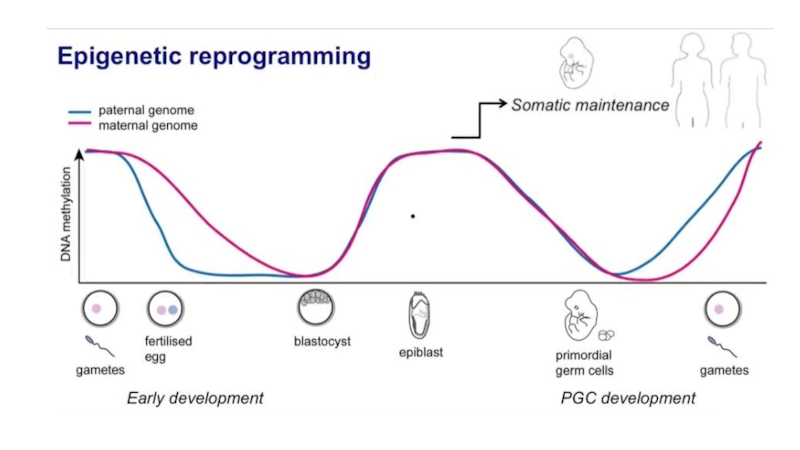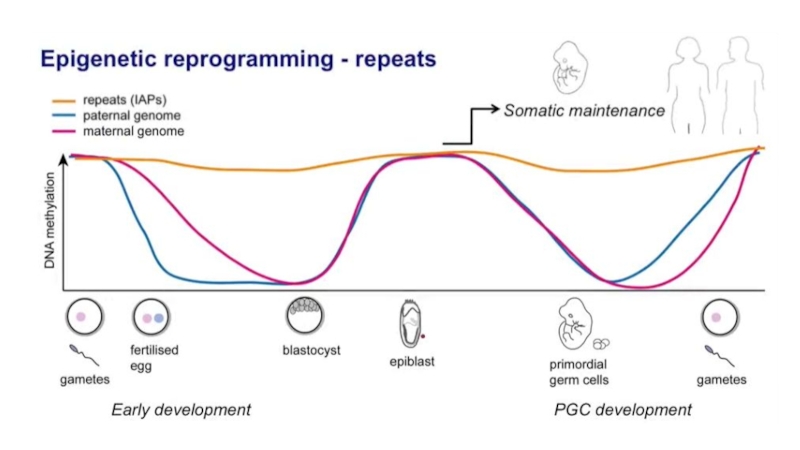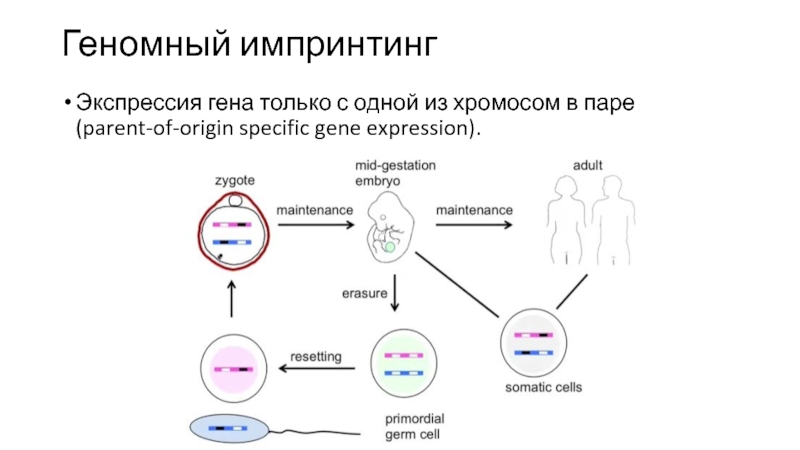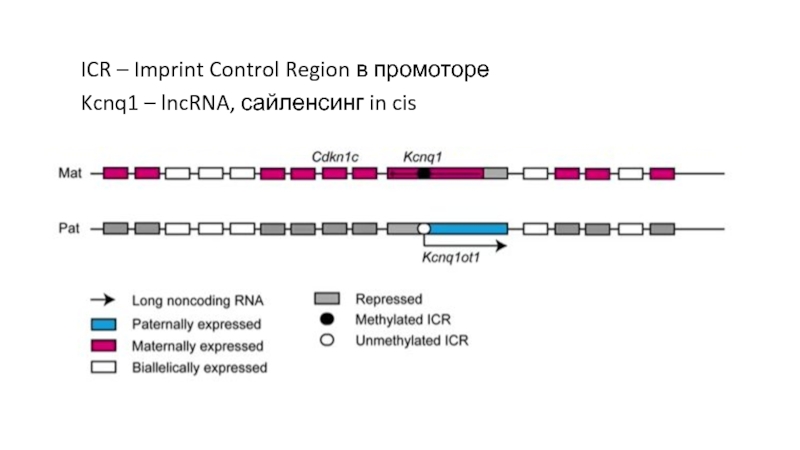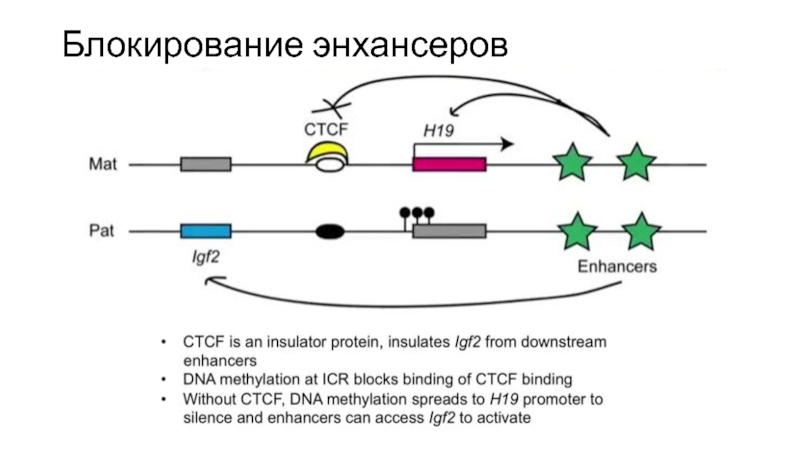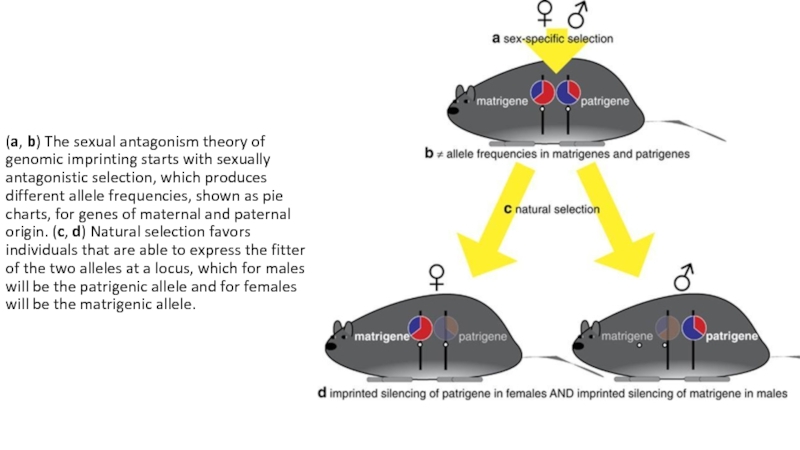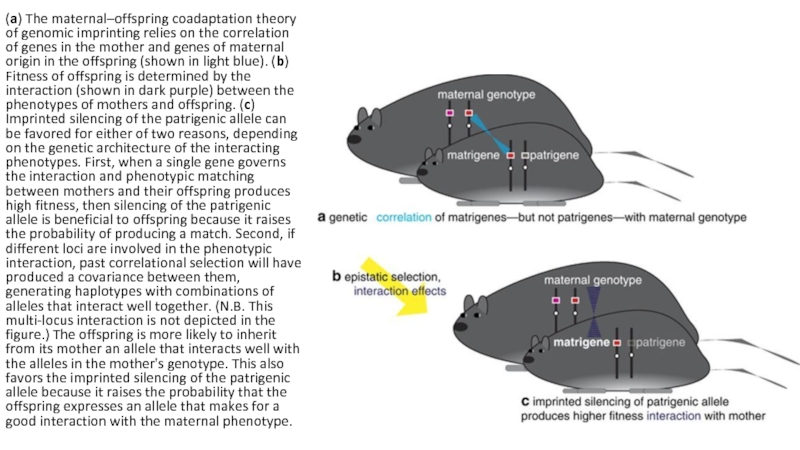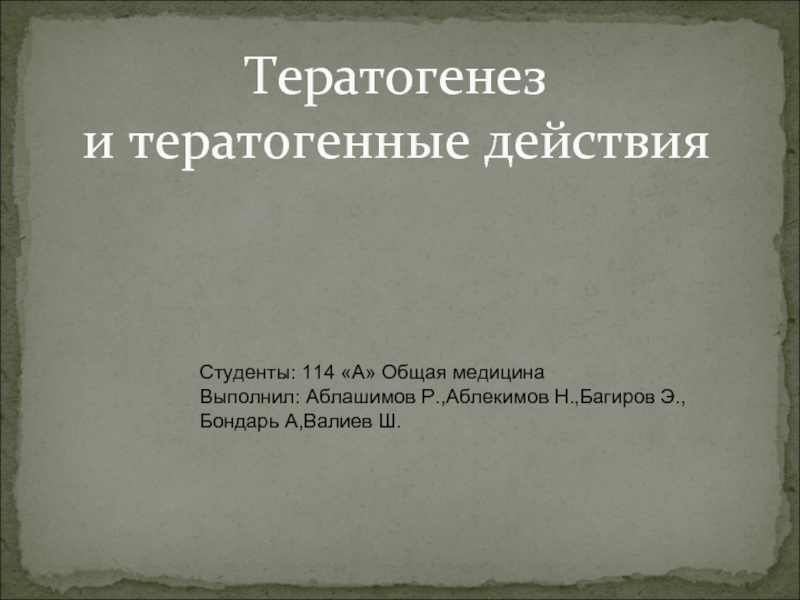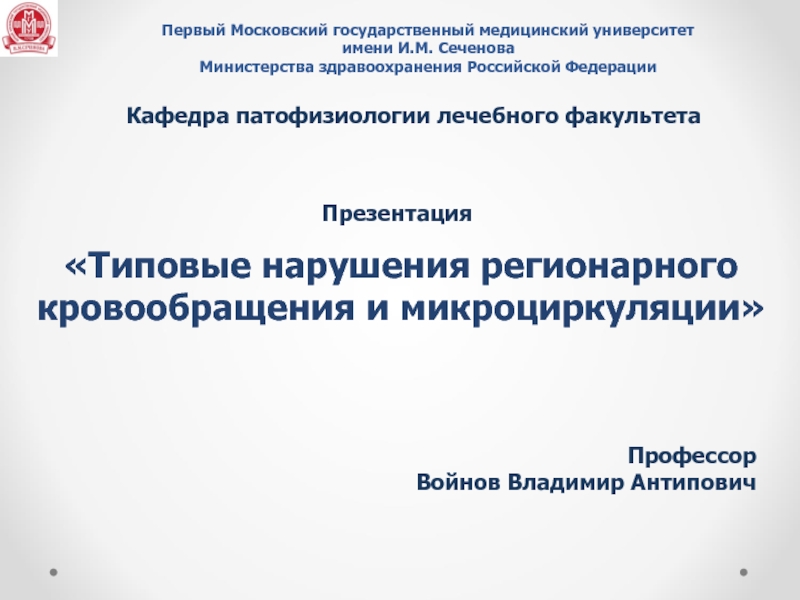- Главная
- Разное
- Дизайн
- Бизнес и предпринимательство
- Аналитика
- Образование
- Развлечения
- Красота и здоровье
- Финансы
- Государство
- Путешествия
- Спорт
- Недвижимость
- Армия
- Графика
- Культурология
- Еда и кулинария
- Лингвистика
- Английский язык
- Астрономия
- Алгебра
- Биология
- География
- Детские презентации
- Информатика
- История
- Литература
- Маркетинг
- Математика
- Медицина
- Менеджмент
- Музыка
- МХК
- Немецкий язык
- ОБЖ
- Обществознание
- Окружающий мир
- Педагогика
- Русский язык
- Технология
- Физика
- Философия
- Химия
- Шаблоны, картинки для презентаций
- Экология
- Экономика
- Юриспруденция
Эпигенетика. Эпигенетические метки презентация
Содержание
- 1. Эпигенетика. Эпигенетические метки
- 2. Эпигенетические метки – митотически наследуемые изменения в экспрессии генов, не связаные с изменением нуклеотидной последовательности.
- 3. Хроматин
- 8. CpG острова часто находятся в промоторах.
- 12. Метилирование СрG мутагенно В геноме CG пар
- 15. Тельце Барра
- 16. Бисульфитное секвенирование – определение метилированных CpG
- 18. Хвосты гистонов
- 20. Ацетилирование гистонов Эухроматинизация Рекрутирование комплексов ремоделлинга через бромодомены НЕ эпигенетическая метка – не передается митотически
- 21. Метилирование гистонов Может как активировать так и ингибировать транскрипцию Не меняет заряд
- 23. H3K9me рекрутирует DNMT, HDAC (Histone DeAcetylase), HP1 (рекрутирует HMT, Histone Methyl Transferase, для распространения метки).
- 24. Комплексы ремоделлинга – АТФ-зависимое передвижение нуклеосом
- 25. Варианты гистонов Гистоны Н2А, Н3 и Н1
- 26. Некодирующие РНК
- 27. РНК-интерференция - siRNA
- 28. microRNA
- 30. Piwi RNA piRNA стимулируют метилирование повторов
- 33. circRNA
- 35. lncRNA – длинные некодирующие Прошли сплайсинг, кэпирование
- 37. Специфичность по последовательности необязательна.
- 38. XIST – X-Inactivation Specific Transcript Экспрессируется только
- 39. HOTAIR – HOX Transcript Antisense RNA. In
- 41. Эпигенетическое репрограммирование – восстановление тотипотентности
- 46. Геномный импринтинг Экспрессия гена только с одной из хромосом в паре (parent-of-origin specific gene expression).
- 48. ICR – Imprint Control Region в промоторе Kcnq1 – lncRNA, сайленсинг in cis
- 49. Блокирование энхансеров
- 50. Эволюция импринтинга Разделение на социальные группы – родство не 1, а 1/2
- 51. (a, b) The sexual antagonism theory of genomic
- 52. (a) The maternal–offspring coadaptation theory of genomic
- 53. Спасибо за внимание!
Слайд 2Эпигенетические метки – митотически наследуемые изменения в экспрессии генов, не связаные
с изменением нуклеотидной последовательности.
Слайд 12Метилирование СрG мутагенно
В геноме CG пар меньше, чем можно было ожидать
вероятностно, т.к. metC переходит в Т.
Слайд 20Ацетилирование гистонов
Эухроматинизация
Рекрутирование комплексов ремоделлинга через бромодомены
НЕ эпигенетическая метка – не передается
митотически
Слайд 23H3K9me рекрутирует DNMT, HDAC (Histone DeAcetylase), HP1 (рекрутирует HMT, Histone Methyl
Transferase, для распространения метки).
Слайд 25Варианты гистонов
Гистоны Н2А, Н3 и Н1 бывают в виде нескольких вариантов.
CENP-A
(centromere specific histone)
H2A.X – репарация (доп. сайт фосф., после репарации отщепляется фосфатазой)
macroH2A – неактивная Х хромосома
H2A.X – репарация (доп. сайт фосф., после репарации отщепляется фосфатазой)
macroH2A – неактивная Х хромосома
Слайд 35lncRNA – длинные некодирующие
Прошли сплайсинг, кэпирование и полиаденилирование
>200 b
Обеспечивают специфичность комплексов
ремоделинга
Как іn cis так и in trans
Могут обеспечивать транскрипционную интерференцию
Могут работать как Guide или Scaffold
Как іn cis так и in trans
Могут обеспечивать транскрипционную интерференцию
Могут работать как Guide или Scaffold
Слайд 38XIST – X-Inactivation Specific Transcript
Экспрессируется только с 1 Х-хромосомы – работает
in cis
Рекрутирует Polycomb Repressive Complex 2 => guide
Рекрутирует Polycomb Repressive Complex 2 => guide
Слайд 46Геномный импринтинг
Экспрессия гена только с одной из хромосом в паре (parent-of-origin
specific gene expression).
Слайд 51(a, b) The sexual antagonism theory of genomic imprinting starts with sexually
antagonistic selection, which produces different allele frequencies, shown as pie charts, for genes of maternal and paternal origin. (c, d) Natural selection favors individuals that are able to express the fitter of the two alleles at a locus, which for males will be the patrigenic allele and for females will be the matrigenic allele.
Слайд 52(a) The maternal–offspring coadaptation theory of genomic imprinting relies on the
correlation of genes in the mother and genes of maternal origin in the offspring (shown in light blue). (b) Fitness of offspring is determined by the interaction (shown in dark purple) between the phenotypes of mothers and offspring. (c) Imprinted silencing of the patrigenic allele can be favored for either of two reasons, depending on the genetic architecture of the interacting phenotypes. First, when a single gene governs the interaction and phenotypic matching between mothers and their offspring produces high fitness, then silencing of the patrigenic allele is beneficial to offspring because it raises the probability of producing a match. Second, if different loci are involved in the phenotypic interaction, past correlational selection will have produced a covariance between them, generating haplotypes with combinations of alleles that interact well together. (N.B. This multi-locus interaction is not depicted in the figure.) The offspring is more likely to inherit from its mother an allele that interacts well with the alleles in the mother's genotype. This also favors the imprinted silencing of the patrigenic allele because it raises the probability that the offspring expresses an allele that makes for a good interaction with the maternal phenotype.

